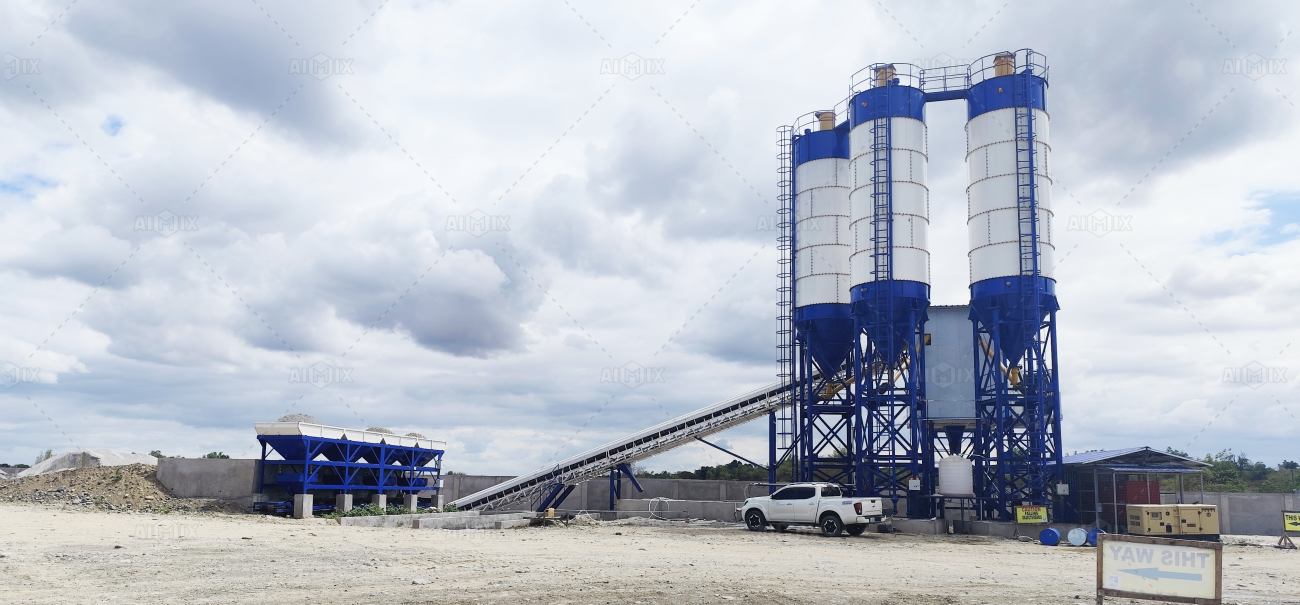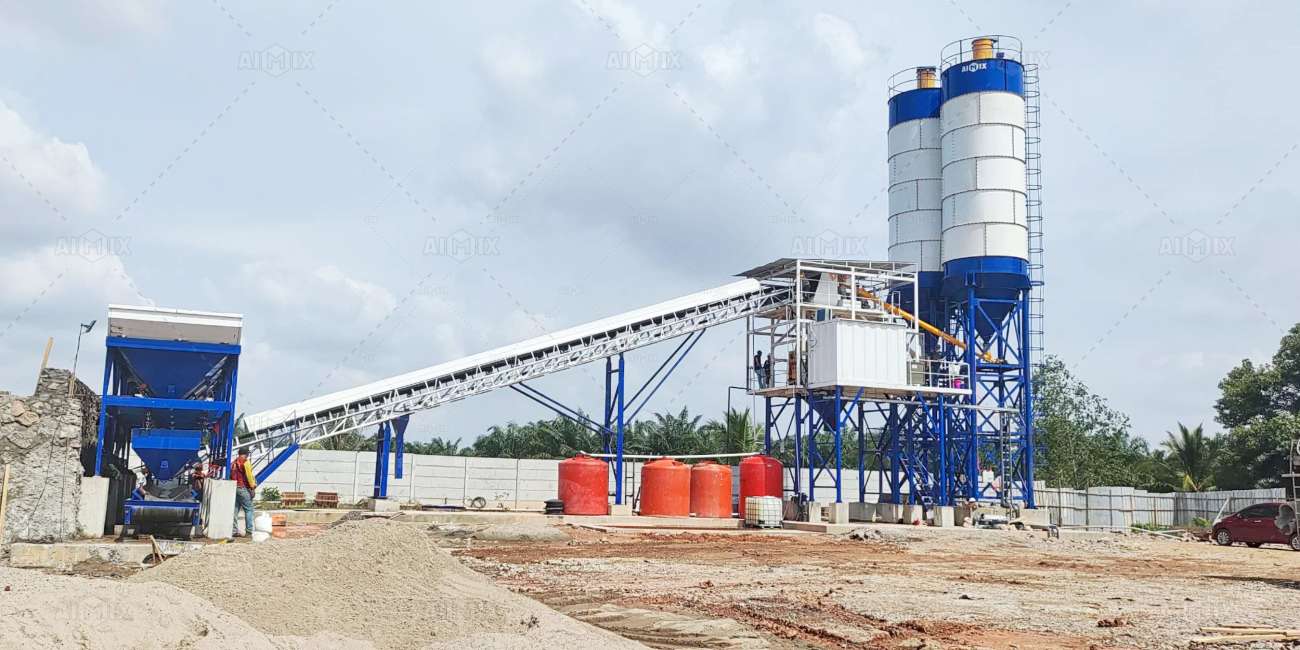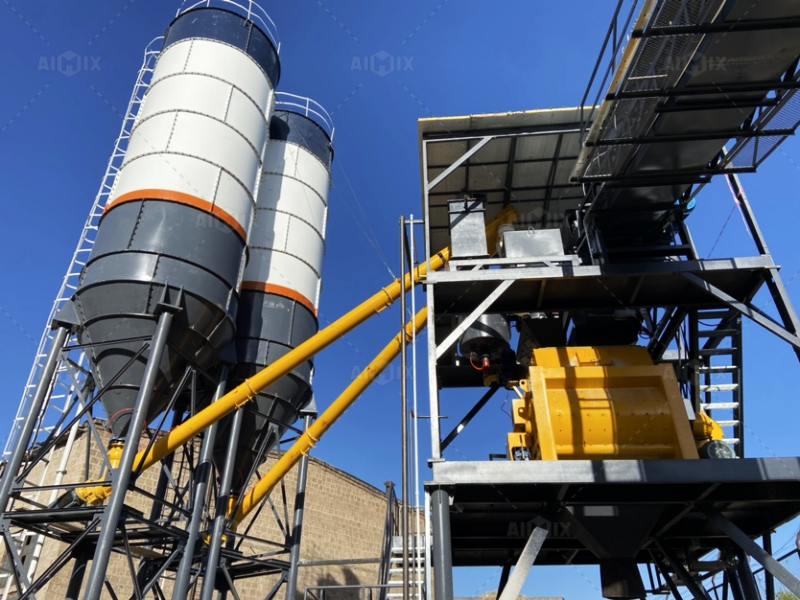In the highly competitive construction industry, the demand for efficient, cost-effective, and scalable concrete production solutions has never been greater. Ready-mix concrete (RMC) plants are at the heart of this transformation, supporting large-scale infrastructure, commercial, and residential developments. However, controlling the cost of establishing and operating an RMC plant remains a top priority for contractors and investors. Two technological trends—modular design and the Internet of Things (IoT)—are increasingly being adopted to address cost concerns while enhancing productivity and quality.

Understanding RMC Plant Cost Dynamics
An RMC plant cost is determined by a combination of fixed and variable elements. These include capital expenditure (CapEx) such as land, plant structure, mixer systems, storage silos, conveyors, and control systems; and operational expenditure (OpEx) like energy consumption, labor, maintenance, raw material management, and logistics.
As concrete demand rises and margins shrink due to material costs and competitive pressures, plant operators are turning to smarter design and digital solutions to optimize spending without compromising quality or capacity.
Modular Design: Flexibility That Cuts Costs
Modular design refers to the construction of an RMC plant using prefabricated, standardized components or modules that can be assembled quickly on-site. This approach offers several advantages over traditional plant construction that directly influence overall cost:
1. Reduced Installation Time and Labor Costs
Traditional batching plants can take weeks or even months to construct, requiring specialized labor and heavy machinery. Modular mobile batch plants, on the other hand, are designed to be installed in days. This accelerated setup significantly reduces labor hours and related costs, making the initial investment more affordable and allowing the plant to begin operations sooner—leading to faster ROI.
2. Lower Transportation and Assembly Costs
Since modular systems are prefabricated and typically built in controlled factory settings, they are easier and more economical to transport. The uniform dimensions and lightweight materials mean modules can be shipped using standard trucks or containers and assembled on-site with minimal lifting equipment.
3. Scalability and Relocation
A key benefit of modular design is its inherent scalability. Plant owners can start with a basic configuration and add modules—such as additional silos, mixers, or control rooms—as demand increases. Similarly, modular plants can be dismantled and relocated, allowing companies to move production capacity based on project location, thus reducing transportation costs of concrete and boosting operational efficiency.
4. Maintenance and Upgrades
Because components are standardized, sourcing replacements or upgrading systems becomes quicker and cheaper. Modules can be swapped out or improved without major downtime, keeping the plant functional and cost-effective over a longer lifecycle.

IoT Integration: Smarter, Data-Driven Cost Control
The Internet of Things (IoT) is transforming the concrete production landscape by introducing real-time data collection, remote monitoring, and automated process controls. Integrating IoT into RMC batching plants offers cost benefits in multiple areas:
1. Predictive Maintenance
Unplanned equipment failure can result in costly downtime, missed deadlines, and emergency repairs. IoT-enabled sensors embedded in mixers, conveyors, motors, and compressors continuously monitor wear and performance. When abnormalities are detected, maintenance teams are alerted before a breakdown occurs. This predictive maintenance model reduces costly reactive fixes and extends the lifespan of critical equipment.
2. Material Efficiency and Inventory Control
With IoT, batch accuracy improves drastically. Sensors track cement, aggregates, water, and admixture levels in real time, minimizing overuse and waste. Automated replenishment systems prevent stockouts while reducing excessive ordering. This tight control of inventory reduces working capital tied up in unused materials and improves budgeting accuracy.
3. Energy Optimization
Energy consumption is a major operational expense for RMC plants, especially during peak demand times. IoT systems can monitor power usage across all components and adjust production scheduling to off-peak hours where possible. Moreover, smart systems can automatically shut off idle machinery, leading to substantial energy savings over time.
4. Quality Assurance and Compliance
IoT devices ensure each batch meets specified standards by monitoring temperature, moisture content, slump, and other key parameters. Digital logs can automatically record compliance data, reducing the need for manual checks and the risk of human error. These digital quality control systems reduce batch rejections, which are costly both in terms of raw material loss and project delays.
5. Remote Monitoring and Control
IoT makes it possible for plant managers and stakeholders to monitor operations from anywhere using cloud-connected dashboards. This level of visibility supports better decision-making, whether it’s rescheduling deliveries due to weather or adjusting production targets based on updated demand forecasts.

Combined Impact: Smarter Plants, Lower Costs
When modular design and IoT technologies are used together, the cost-saving benefits are compounded. Modular concrete mixer plants built with IoT-ready components are not only cheaper to install and operate but also easier to monitor and maintain. This synergy enables:
Faster commissioning and return on investment
Streamlined logistics and inventory control
Automated and consistent production quality
Real-time analytics for better forecasting and budgeting
Lower lifecycle costs and extended equipment life
Future Outlook
As the construction industry moves toward digitalization and sustainability, the role of modular design and IoT in concrete production will only expand. Smart batching plants will become the standard rather than the exception, driven by the need for operational agility and tighter cost control.
Countries investing in large-scale infrastructure—such as India, Indonesia, and various parts of Africa and Latin America—stand to benefit significantly from mobile, modular, and IoT-equipped RMC plants that offer flexibility without compromising efficiency. Additionally, the push for greener construction methods makes these technologies even more attractive, as they reduce waste and improve resource utilization.
Conclusion
Controlling RMC plant cost is no longer solely about cutting expenses—it’s about investing in the right technologies that deliver long-term savings and productivity gains. Modular design provides the structural flexibility and reduced setup costs that modern projects demand, while IoT offers the intelligence and data-driven management to operate plants more efficiently.
Together, these innovations are shaping the next generation of RMC plants—agile, efficient, and cost-effective—ensuring that concrete production keeps pace with the evolving needs of the construction industry.
